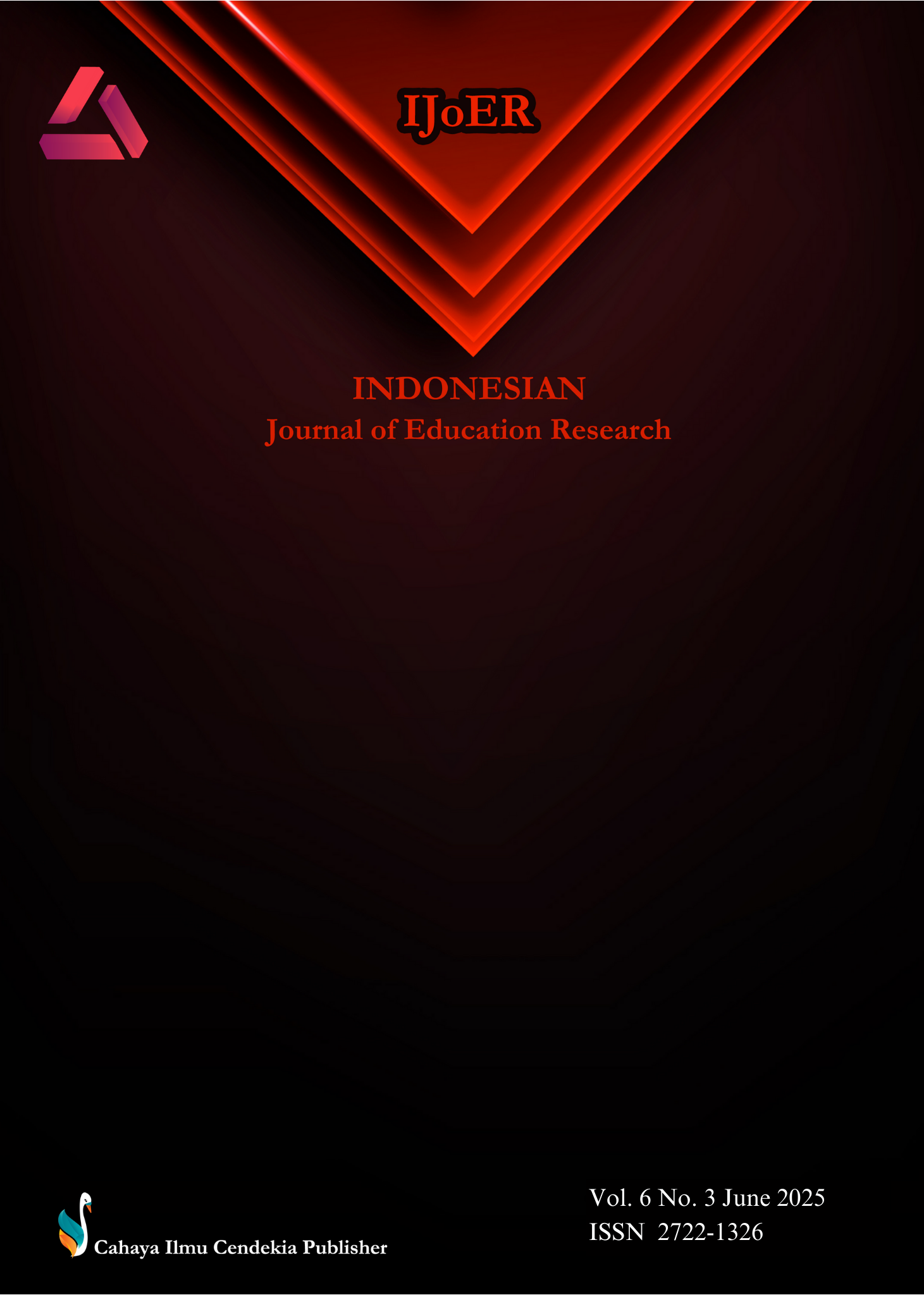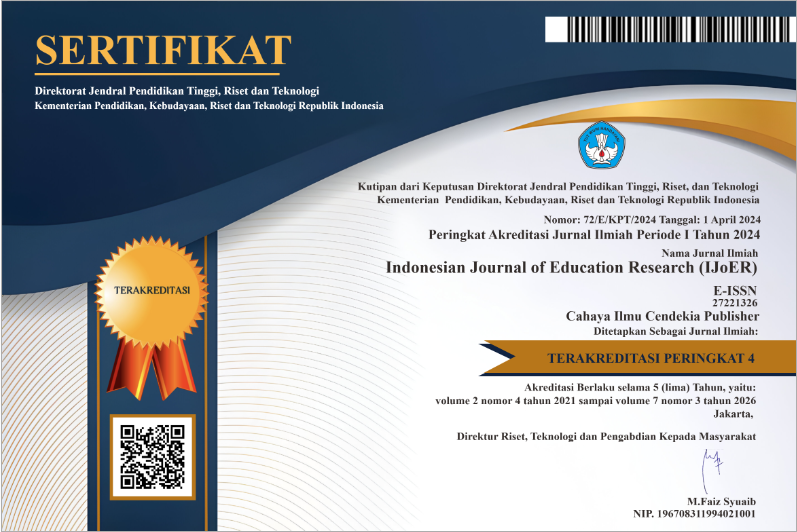The Impact of Learning Styles and Teaching Styles on Second Language Learning Success
Abstract
Purpose of the study: Individuals learn in unique ways, influenced by their preferences, ethnic backgrounds, cultures, and personal experiences. Similarly, teaching styles are shaped by educational philosophies and subject matter, leading to potential mismatches in how knowledge is processed in the classroom. This study aimed to identify the learning and teaching styles of students and teachers, explore the alignment between them, and assess the implications for language teaching.
Methodology: This descriptive quantitative study involved 166 students and 23 teachers from the Department of English Language and Literature (DELL) at the University of Southern Mindanao. Data were collected using the Strategies Questionnaires and the VARK Questionnaire for Trainers to assess learning and teaching styles.
Main Findings: The study revealed that AB English Language (ABEL) students predominantly exhibited bimodal learning preferences, particularly in the aural-read/write (AR) and aural-kinesthetic (AK) modalities. DELL teachers, on the other hand, tended to favor single-modal teaching styles, with a slight visual preference. A strong match was observed between single-modal teachers and students with similar learning preferences, although kinesthetic learning was underrepresented. Teachers who were bimodal or trimodal showed a better alignment with a wider range of student learning preferences. Additionally, all-modal teachers demonstrated the most effective alignment across all VARK learning styles.
Novelty/Originality of this study: This study introduces a fresh perspective on language instruction by emphasizing the importance of incorporating multiple teaching styles to match the diverse learning preferences of students. The findings suggest that creating course outlines with a variety of teaching styles is essential for fostering more effective and inclusive language learning environments, ultimately enhancing student engagement and success.
References
N. Shamsuddin and J. Kaur, “Students’ Learning Style and Its Effect on Blended Learning, Does It Matter?.,” International Journal of Evaluation and Research in Education, vol. 9, no. 1, pp. 195–202, 2020.
C. Dziuban, P. Moskal, A. Reiner, and A. Cohen, “Student Ratings and Course Modalities: A Small Study in a Large Context.,” Online Learning, vol. 27, no. 3, pp. 70–103, 2023.
H. A. Alharbi, “Improving Students’ English Speaking Proficiency in Saudi Public Schools.,” International journal of instruction, vol. 8, no. 1, pp. 105–116, 2015.
J. Singh, K. Steele, and L. Singh, “Combining the best of online and face-to-face learning: Hybrid and blended learning approach for COVID-19, post vaccine, & post-pandemic world,” Journal of Educational Technology Systems, vol. 50, no. 2, pp. 140–171, 2021.
P. M. Newton, “The learning styles myth is thriving in higher education,” Front Psychol, vol. 6, p. 1908, 2015.
J. Cuevas, “Is learning styles-based instruction effective? A comprehensive analysis of recent research on learning styles,” Theory and Research in Education, vol. 13, no. 3, pp. 308–333, 2015.
S. J. Lee, S. Srinivasan, T. Trail, D. Lewis, and S. Lopez, “Examining the relationship among student perception of support, course satisfaction, and learning outcomes in online learning,” Internet High Educ, vol. 14, no. 3, pp. 158–163, 2011.
J. Cuevas. Is learning styles-based instruction effective? A comprehensive analysis of recent research on learning styles. Theory and Research in Education, 13(3), 308-333, 2015.
R. Zhang, & D. Zou). Self-regulated second language learning: A review of types and benefits of strategies, modes of teacher support, and pedagogical implications. Computer Assisted Language Learning, 37(4), 720-765, 2024.
P. J. B. Ongcoy and R. L. Tagare Jr, The role of social support in shaping students' goal achievement. The International Journal of Learner Diversity and Identities, 31(1), 950-958, 2024.
S. L. Siedlecki, “Understanding descriptive research designs and methods,” Clinical Nurse Specialist, vol. 34, no. 1, pp. 8–12, 2020.
D. M. Fatovich, “Surveys: Sample sizes and response rates”.
I. J. Prithishkumar and S. A. Michael, “Understanding your student: using the VARK model.,” J Postgrad Med, vol. 60, no. 2, 2014.
G. Gorsuch and E. Taguchi, “Foreign Language Reading Fluency and Reading Fluency Methodologies,” Research Questions in Language Education and Applied Linguistics: A Reference Guide, pp. 469–474, 2021.
D. Cheetham, “Multi-modal language input: A learned superadditive effect,” Applied Linguistics Review, vol. 10, no. 2, pp. 179–200, 2019.
K. Knollman-Porter, S. E. Wallace, J. A. Brown, K. Hux, B. L. Hoagland, and D. R. Ruff, “Effects of written, auditory, and combined modalities on comprehension by people with aphasia,” Am J Speech Lang Pathol, vol. 28, no. 3, pp. 1206–1221, 2019.
L. Samarakoon, T. Fernando, C. Rodrigo, and S. Rajapakse, “Learning styles and approaches to learning among medical undergraduates and postgraduates,” BMC Med Educ, vol. 13, pp. 1–6, 2013.
K. Laxman, S. Sandip, and K. Sarun, “Exploration of preferred learning styles in medical education using VARK modal,” Russian Open Medical Journal, vol. 3, no. 3, p. 305, 2014.
A. H. Isozaki, “Reading-listening and reading circles: Bimodal approaches building fluency,” The Reading Matrix: An International Online Journal, vol. 18, no. 1, pp. 82–103, 2018.
T. Alexandra, “Foreign Language Acquisition Difficulties: Diagnosing Individual Differences,” 2024.
I. Hussain, “Pedagogical implications of VARK model of learning,” Journal of Literature, Languages and Linguistics, vol. 38, no. 2422–8435, p. 5, 2017.
C. Chang-Tik, “Impact of learning styles on the community of inquiry presences in multi-disciplinary blended learning environments,” Interactive Learning Environments, vol. 26, no. 6, pp. 827–838, 2018.
I. Noben, J. F. Deinum, I. M. E. Douwes-van Ark, and W. H. A. Hofman, “How is a professional development programme related to the development of university teachers’ self-efficacy beliefs and teaching conceptions?,” Studies in educational evaluation, vol. 68, p. 100966, 2021.
M. Rafiq, A. Hardiyanto, and S. Sumarno, “An Analysis of Student Learning Style in Learning English in Sekolah Indonesia Kuala Lumpur, Malaysia,” Voices of English Language Education Society, vol. 7, no. 1, pp. 145–157, 2023.
B. Widharyanto and H. Binawan, “Learning style and language learning strategies of students from various ethnics in Indonesia,” Jurnal Cakrawala Pendidikan, vol. 39, no. 2, pp. 480–492, 2020.
D. H. Jonassen and B. L. Grabowski, Handbook of individual differences, learning, and instruction. Routledge, 2012.
M. Pahwa and S. Rangnekar, “Enhancing the Readiness for Change Role of Intentional Behaviour, Planfulness, and Learning Through Experimentation: An Empirical Study of Indian Employees,” International Journal of E-Adoption (IJEA), vol. 15, no. 1, pp. 1–21, 2023.
W. W. Fisher, M. E. Kelley, and J. E. Lomas, “Visual aids and structured criteria for improving visual inspection and interpretation of single‐case designs,” J Appl Behav Anal, vol. 36, no. 3, pp. 387–406, 2003.
A. S. WULANDARI, “Teaching Descriptive Text Writing by Using Youtube Videos to Improve the Tenth-Grade Students’ Writing Achievement”.
N. D. Fleming and C. Mills, “Not another inventory, rather a catalyst for reflection,” To improve the academy, vol. 11, no. 1, pp. 137–155, 1992.
E. Tabatabei, “Innovative, creative VARK learning styles improvement strategies,” Global Journal Of Foreign Language Teaching, vol. 8, no. 3, pp. 87–93, 2018.
A. MCcall, “The Future of Learning Styles: Emerging Trends and Technologies,” 2024.
L. Leopold, “Prewriting tasks for auditory, visual, and kinesthetic learners,” TESL Canada Journal, p. 96, 2012.
N. N. Vu, B. P. Hung, N. T. T. Van, and N. T. H. Lien, “Theoretical and instructional aspects of using multimedia resources in language education: A cognitive view,” Multimedia Technologies in the Internet of Things Environment, Volume 2, pp. 165–194, 2022.
A. Roy, F. Guay, and P. Valois, “Teaching to address diverse learning needs: Development and validation of a differentiated instruction scale,” International Journal of Inclusive Education, vol. 17, no. 11, pp. 1186–1204, 2013.
R. C.-Y. Loh and C.-S. Ang, “Unravelling cooperative learning in higher education,” Research in Social Sciences and Technology, vol. 5, no. 2, pp. 22–39, 2020.
P. Kharb, P. P. Samanta, M. Jindal, and V. Singh, “The learning styles and the preferred teaching—learning strategies of first year medical students,” J Clin Diagn Res, vol. 7, no. 6, p. 1089, 2013.
N. Spada, “Reflecting on task-based language teaching from an Instructed SLA perspective,” Language Teaching, vol. 55, no. 1, pp. 74–86, 2022.
M. Bisri, Y. B. Pertiwi, N. Eva, and T. Chusniyah, “Personal growth initiatives and life satisfaction among elderly people,” Psychology Research on Education and Social Sciences, vol. 3, no. 2, pp. 43–48, 2022.
M. Masela and A. S. Subekti, “Auditory and kinaesthetic learning styles and L2 achievement: A correlational study,” Englisia: Journal of Language, Education, and Humanities, vol. 8, no. 2, pp. 41–53, 2021.
M. Overstreet and G. S. Straquadine, “An examination of a high school horticulture curriculum process designed for diverse student learning styles,” in Western Region Agricultural Education Research Conference Annual Research Conference, Washington, 2002.
M. F. Arman et al., “Tactile Exploration in Architecture: The Role of Kinesthetic Learning in Developing Design Skills,” International Journal of Business and Technology Management, vol. 6, no. S2, pp. 302–317, 2024.
S. Yeom, A. E. Fluck, and A. Sale, “Indications for Kinesthetic Learning Through Haptic Devices,” Encyclopedia of Education and Information Technologies, pp. 900–907, 2020.
A. Gepp and K. Kumar, “How to improve teaching using blended learning,” in Theoretical and practical approaches to innovation in higher education, IGI Global, 2020, pp. 80–90.
A. Aremu, L. A. Akinyemi, I. A. Olasunkanmi, and T. Ogundipe, “Raising the standards/quality of UBE teachers through technologymediated strategies and resources,” Emerging perspectives on Universal basic education. A book of readings on Basic Education in Nigeria, pp. 139–149, 2022.
J. Paulsen and A. C. McCormick, “Reassessing disparities in online learner student engagement in higher education,” Educational researcher, vol. 49, no. 1, pp. 20–29, 2020.
A. Reznitskaya and M. Gregory, “Student thought and classroom language: Examining the mechanisms of change in dialogic teaching,” Educ Psychol, vol. 48, no. 2, pp. 114–133, 2013.
J.-M. Su, S.-S. Tseng, C.-T. Chen, and W.-N. Tsai, “Adaptive learning environment to meet pedagogical needs,” Journal of information science and engineering, vol. 20, no. 6, pp. 1057–1077, 2004.
Copyright (c) 2025 Lovely Jane L. Balonda, Lawrence Anthony U. Dollente

This work is licensed under a Creative Commons Attribution 4.0 International License.
Authors who publish with this journal agree to the following terms:
- Authors retain copyright and acknowledge that the Indonesian Journal of Education Research (IJoER) is the first publisher licensed under a Creative Commons Attribution 4.0 International License.
- Authors are able to enter into separate, additional contractual arrangements for the non-exclusive distribution of the journal's published version of the work (e.g., post it to an institutional repository or publish it in a book), with an acknowledgment of its initial publication in this journal.
- Authors are permitted and encouraged to post their work online (e.g., in institutional repositories or on their website) prior to and during the submission process, as it can lead to productive exchanges and earlier and greater citation of published work.







.png)
.png)




















